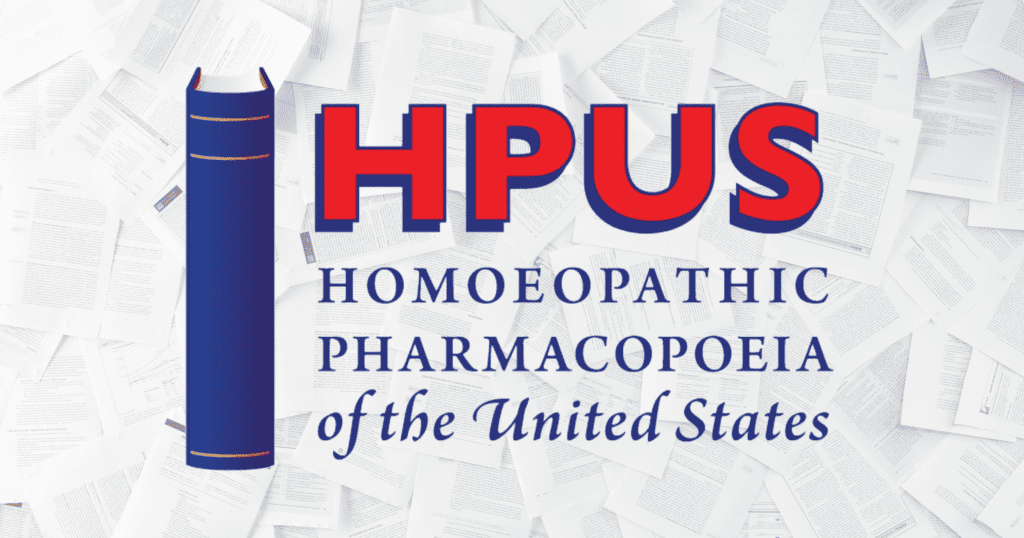The Legal Status of the HPUS as an Official Compendium

By Al Lorman, AAHP Counsel
Pharmacopoeias have been around for thousands of years. Historically, they provided the medical community with critical information necessary to make (and sometimes use) drugs. In many ways, pharmacopoeias were the first consumer protection vehicle in the world of pharmaceuticals.
The Homeopathic Pharmacopoeia of the United States (in its various iterations) is older than the Federal laws that regulate drugs. The first edition of the HPUS was published in 1897, nine years before the passage of the Pure Food and Drugs Act of 1906. That Act recognized the United States Pharmacopoeia but was silent on the HPUS, an omission that was remedied in the Federal Food, Drug, and Cosmetic Act of 1938 (FD&C Act). Curing that omission was largely the work of Senator Royal S. Copeland (D-NY), a homeopathic physician who was the principal Senate sponsor of the legislation and the former president of the New York City Board of Health. (Sadly, Sen. Copeland died just four days after the Federal Food, Drug, and Cosmetic Act was passed and before President Franklin D. Roosevelt signed it into law.)
Since 1938, then, the HPUS has been recognized as an “official compendium.” What exactly does that mean?
First, the FD&C Act defines a drug, in part, as “articles recognized in the . . . official Homoeopathic Pharmacopoeia of the United States . . . or any supplement . . . .” So a substance included in the HPUS is going to be considered a drug by FDA.
Second, the HPUS is an “official compendium.”
Third, a drug is considered to be adulterated “if it purports to be or is represented as a drug the name of which is recognized in an official compendium, and its strength differs from, or its quality or purity falls below, the standard set forth in such compendium. Such determination as to strength, quality, or purity shall be made in accordance with the tests or methods of assay set forth in such compendium . . . .”
Fourth, a drug is considered to be misbranded if the drug is recognized in an official compendium and its label fails to bear “the official title thereof in such compendium . . . .”
You will note that the FD&C Act says nothing about the role of an “official compendium” in regulating uses of a drug. Nor does it require that a drug be recognized in an official compendium.
So, it is possible to take a very narrow view of the role of the HPUS. And, for many years, that narrow view did prevail. But with the revival of interest in homeopathy in the 1970s, the HPUS began to assume a more prominent role in homeopathy. The issuance in 1988 of Compliance Policy Guide 400.400, Conditions under Which Homeopathic Drugs May Be Marketed (since withdrawn), noted the legal status of the HPUS as an official compendium, as discussed above. The CPG also stated, not very elegantly, that, “Documentation must be provided to support that those products or ingredients which are not recognized officially in the HPUS, an addendum to it, or its supplements are generally recognized as homeopathic products or ingredients.” Thus, from FDA’s perspective in 1988, a drug listed in the HPUS was not only official, but also “generally recognized as homeopathic.” Since the CPG contained no explicit premarket application requirement, the phrase, “documentation must be provided…” appears to have been what was left after FDA initially considered requiring an HPUS monograph to come within the ambit of the CPG.
As homeopathy has grown, the practical role of the HPUS has grown as well. In addition to substantially increasing the data required for acceptance of a new drug (including efficacy data), the HPUS has taken the lead in developing guidance for compliance with various cGMP requirements. These efforts have included, for the first time, substantial interactions with FDA scientific personnel. And, unlike the USP, the HPUS continues to monitor the safety and toxicology profile of monographed drugs and make monograph changes when appropriate. Thus, the HPUS has gone well beyond its original statutory role to undertake a variety of actions “directed to the furtherance of homeopathic healing,” in the words of the Homeopathic Pharmacopoeia Convention of the United States.
